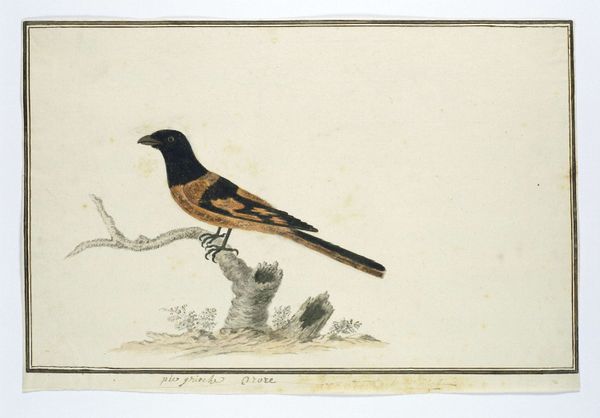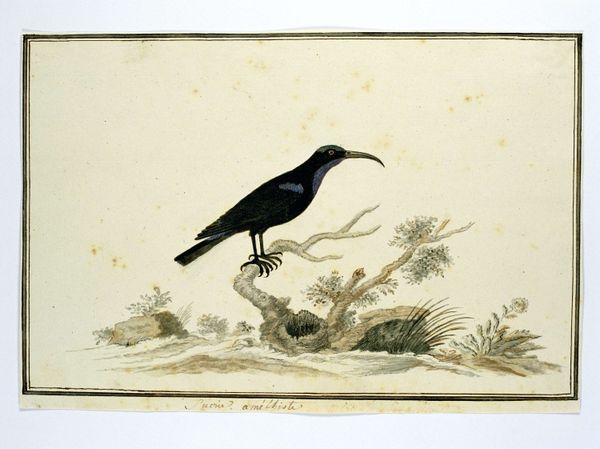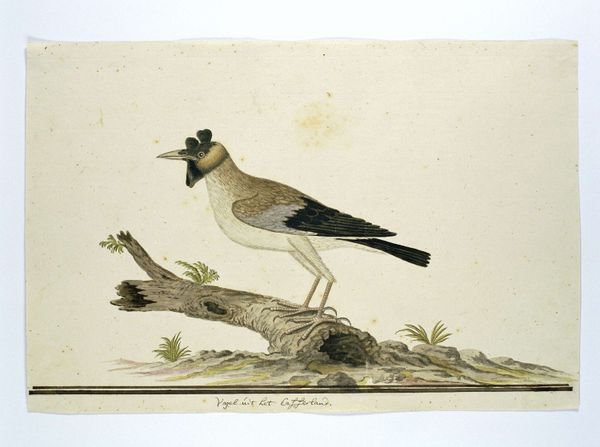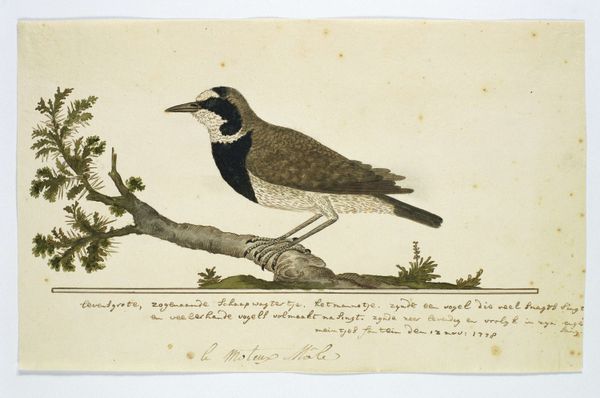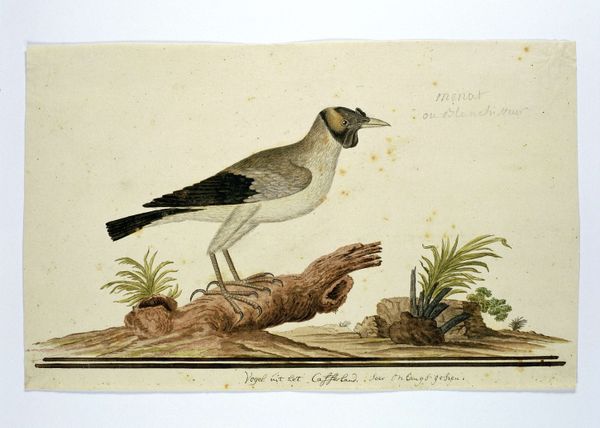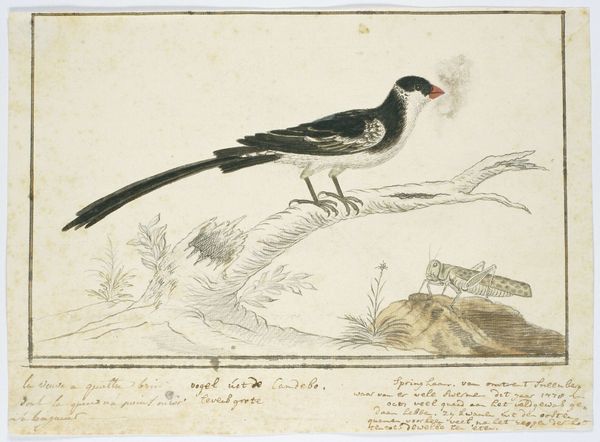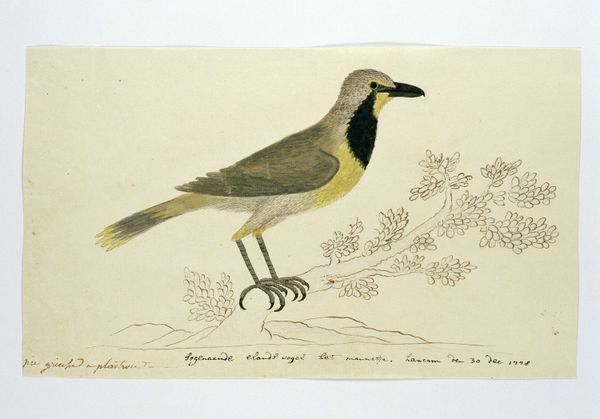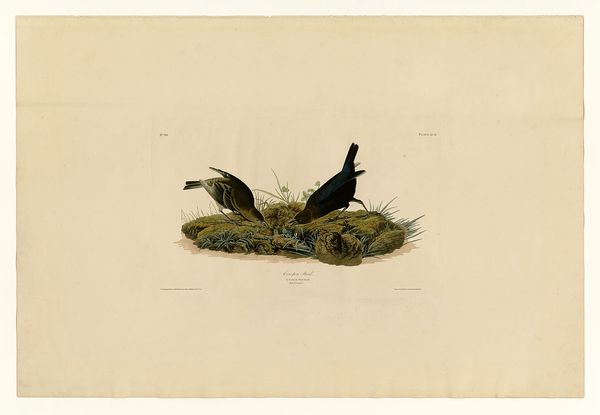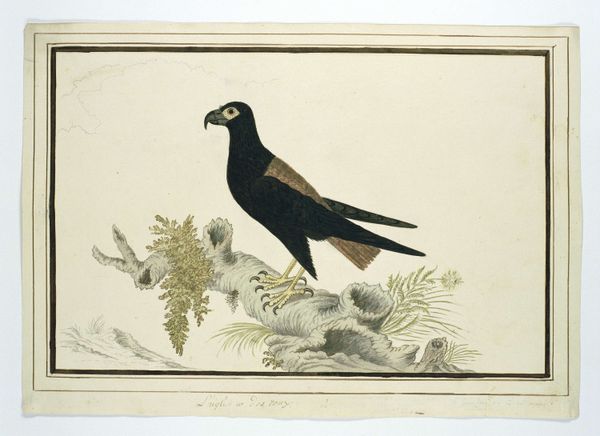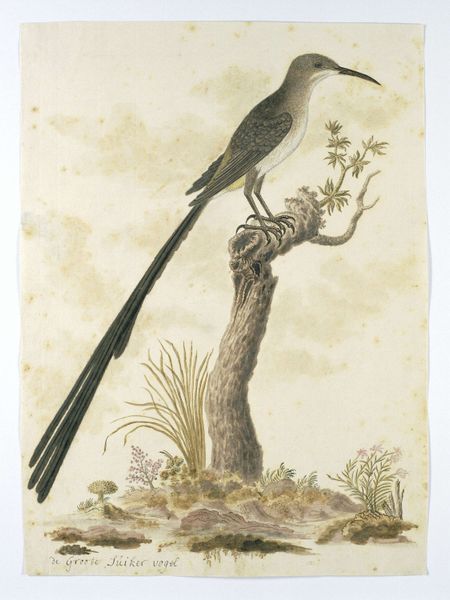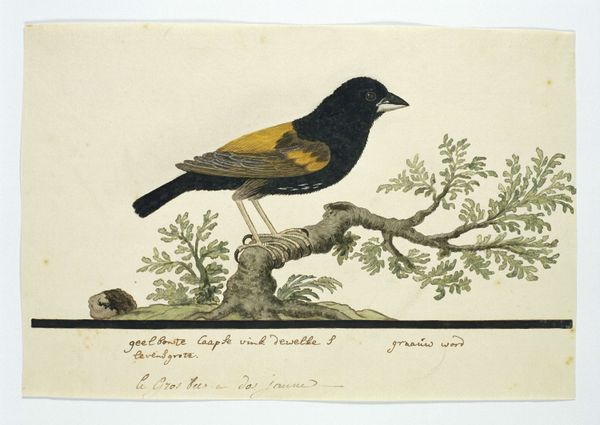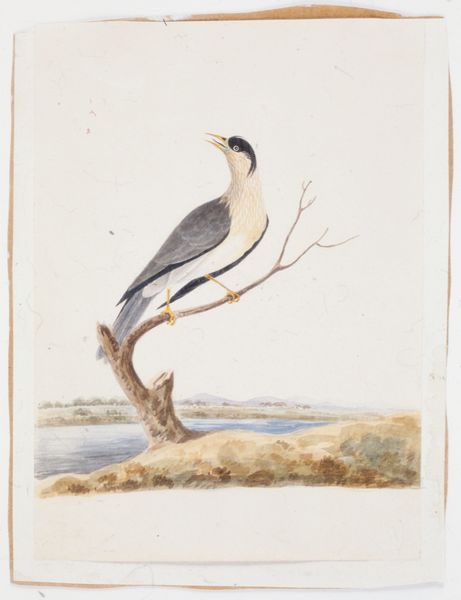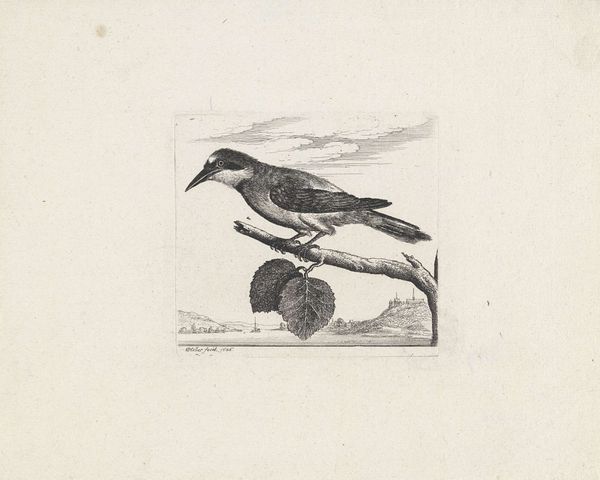
drawing, paper, watercolor, ink
#
portrait
#
drawing
#
landscape
#
paper
#
watercolor
#
ink
#
watercolour illustration
#
watercolor
#
realism
Dimensions: height 660 mm, width 480 mm, height 306 mm, width 412 mm, height 258 mm, width 391 mm
Copyright: Rijks Museum: Open Domain
Editor: Here we have Robert Jacob Gordon's "Motacilla aguimp (African pied wagtail)," a drawing made with ink and watercolor on paper, sometime between 1777 and 1786. I’m immediately struck by the stark contrast of the bird's black and white plumage against the muted tones of the branch and the paper. What do you see in this piece? Curator: It’s fascinating to consider this drawing in the context of natural history and colonialism. Gordon, as a military man and explorer for the Dutch East India Company, was charting territories and, in a sense, claiming knowledge. Consider the power dynamic inherent in meticulously documenting and classifying the flora and fauna of a land. Who was this information for, and what was its ultimate purpose? Editor: That's a really interesting point, that this isn't just a simple depiction of a bird, but part of a larger project of colonial knowledge-gathering. How would such documentation influence the socio-political view? Curator: Exactly. These illustrations were not simply objective recordings of nature; they were acts of appropriation. They reflect a Western gaze imposing order and understanding onto a new environment, contributing to a system where this knowledge could be used to govern and exploit the land and its resources. Does the realism employed in this portrait influence the authenticity of the piece and it’s intended purpose? Editor: I hadn't thought about the art being more than just an artistic portrayal. It highlights how art is also involved in power, like in this period of Dutch Imperialism. Curator: Precisely. Seeing art through this lens encourages a critical perspective. Understanding the socio-political background reshapes our understanding, beyond the merely aesthetic. Editor: Absolutely. I’ll never look at a natural history illustration the same way again! Thank you for the insight.
Comments
No comments
Be the first to comment and join the conversation on the ultimate creative platform.
